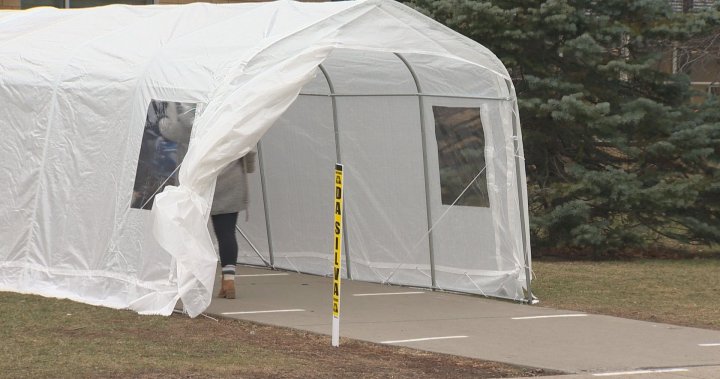Scorching hot days and frigid cold spells may be contributing to an increasing number of deaths and disabilities from stroke, according to a new study. With climate change leading to more extreme temperatures, the global burden of stroke could continue to rise.
The study, published Wednesday in Neurology, found that in 2019 climate change could have been linked to more than half a million deaths from stroke across the world.
Over three decades (1990 to 2019), researchers discovered a rising correlation between both high and low temperatures and the occurrence of death and disability from stroke. However, the researchers noted the study does not prove that climate change causes stroke, it only shows an association.
“Dramatic temperature changes in recent years have affected human health and caused widespread concern,” study author Quan Cheng, of Xiangya Hospital Central South University in China, said in a Wednesday media release. “Our study found that these changing temperatures may increase the burden of stroke worldwide, especially in older populations and areas with more health care disparities.”

Stroke is the third leading cause of death in Canada, according to Statistics Canada. It happens when blood stops flowing to any part of your brain, damaging brain cells. According to the Heart and Stroke Foundation, a stroke event resulting in hospitalization happens every five minutes in Canada.
Extreme temperatures are also on the rise across the world. Weather events from raging wildfires to scorching summer heat waves made 2023 the hottest year on record, according to a report by European climate agency Copernicus. Last year, the global average temperature was 14.98 C – the highest ever recorded since data collection began in 1850.
Dr. Dylan Blacquiere, a stroke neurologist at the Ottawa Hospital, told Global News that this is not the first time environmental conditions have shown to be a risk factor in terms of stroke.
“We know there’s been a link between air pollution, for example, and increased cardiovascular risks. So I don’t think anyone would be truly surprised if it did turn out there was some potential linkage between [climate change and stroke],” he said. “The link between our environment and the link between cardiovascular risk is becoming more and more clear.”
What did the researchers find?
While risk factors for stroke such as high blood pressure, smoking, obesity and diabetes have been well-established, the researchers sought to investigate whether extreme temperature changes in recent years have also played a role in stroke incidence.
The latest health and medical news
emailed to you every Sunday.
To find this data, the researchers from Xiangya Hospital Central South University in China looked at health records for more than 200 countries and territories. They then examined the number of stroke deaths and disabilities due to non-optimal temperature (either high or low temperature). They also further divided it into regions, age groups and genders.
In 2019, there were 521,031 stroke deaths linked to non-optimal temperatures, according to the study. There were also 9.4 million disability-adjusted life years due to stroke linked to non-optimal temperatures. (Disability-adjusted life years are the number of years of life lost due to premature death and years lived with illness, according to the study).
Globally, the study found that men had a heavier burden of stroke deaths than women. And Central Asia had the heaviest burden at a regional level.

Age also played a factor. The study revealed that while elderly populations typically bear a heavier burden of stroke, in regions experiencing high temperatures, the incidence of stroke among young people aged 10 and above is “increasing rapidly and is projected to escalate further in the coming decades.” This was “disproportionately concentrated” in low sociodemographic index regions such as Africa.
“We’re starting to see more and more younger people with stroke. The reasons for this are not 100 per cent clear,” Blacquiere said.
It may be linked to traditional factors such as high blood pressure, cholesterol levels, sedentary lifestyles and cigarette smoking, he said. But Blacquiere suggests that other factors may be at play, raising the question of whether environmental conditions also contribute to this trend.
“It certainly again opens up this intriguing possibility that the environment around us may be having some impact that we’re not sure entirely about and that future research will have to help us clarify,” he added.
How extreme temperatures may affect stroke
Although the study does not prove climate change causes stroke, the researchers hypothesize why it may be linked.
The team found the majority of these strokes were due to lower-than-optimal temperatures, however, they also found an increase in strokes tied to higher-than-optimal temperatures.
“With lower temperatures, a person’s blood vessels can constrict, increasing blood pressure. High blood pressure is a risk factor for stroke,” the researchers stated.
“Higher temperatures may cause dehydration, affecting cholesterol levels and resulting in slower blood flow, factors that can also lead to stroke.”
Blacquiere said when it comes to high temperatures, which would be of particular concern in Canada, factors such as dehydration and strain on the heart “could theoretically play a role in increased stroke incidence.”
He pointed to the example of the wildfires that swept across Canada in 2023, saying the smoke from the forest fires had major health implications, affecting respiratory and cardiovascular health.
When it comes to safeguarding your health and reducing the risk of stroke, he emphasized the importance of knowing your blood pressure, staying physically active and maintaining a healthy diet and lifestyle.

There are also measures to alleviate other risk factors, including those associated with the environment, Blacquiere said.
“Being aware of the environment around you and perhaps if you are an older or more vulnerable person, if there are alerts about high temperatures or if alerts are coming out about, for example, air pollution from wildfire smoke, those be things to be careful about,” he said.
“And perhaps thinking about how you’re going to address things like outdoor activities or maintaining a plan to make sure that you’re able to remain cool, that you’re able to maintain an environment where possible, where the air is as clean as possible too, to prevent some of the complications that could come from that.”
— With files from Global News’ Saba Aziz





